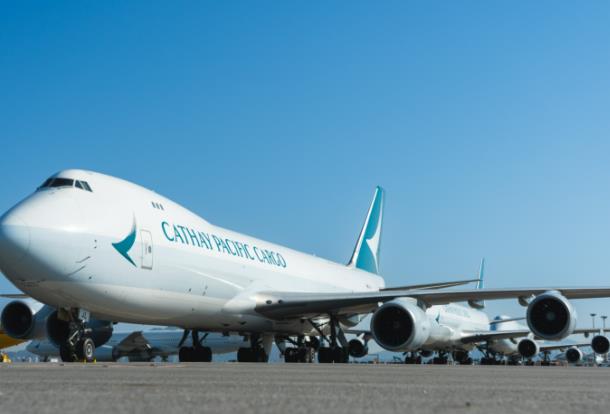ChinaTravelNews, Ritesh Gupta - Established carriers in China have been expanding the membership base of their respective loyalty programmes, for instance, Air China had amassed 50.91 million Phoenix Miles FFP members by last year, growing by almost 8 million over 2016. The FFP accounted for 44% of the total revenue generation last year.
So how to capitalize on this traffic and also avail opportunities in today's digital economy in China?
"It is time for airlines to look beyond core air and air ancillaries-related revenue. Ascertain what a loyal member “looks like a consumer”. There have been examples of full service carriers, too, now rewarding their (FFP) members for shopping of commodity products (fuel, grocery etc.)," said an executive.
"In today's era, for an airline, whether it chooses to spin-off a loyalty program or not, the value of setting up a platform model (where there is facilitation of shopping of non-airline and even non-travel products via a digital retailing platform) or a coalition loyalty program that gives them access to unusual datasets (to get details about the lifestyle of the customer) can't be ignored. Earning loyalty currency from categories such as grocery or fuel shopping opens up the utility of a loyalty program to the infrequent traveller as well. Once the stickiness of such a platform or loyalty programme goes up, then airlines can look at how to reward customers for even shopping on other ecosystems, could be Taobao or JD.com," added the same executive.
China Southern Airlines has shown the way in China with its E-Wallet offering, allowing users to open an e-wallet account via their using SkyPearl card number. "Our loyalty program members can "burn" their miles offline and online with partners. This is for several product categories - food, beverages, supermarket and even e-commerce sites/ platforms," shared Guoxiang Wu, SVP, Marketing and Sales China Southern Airlines. The outlets include McDonalds, KFC, Starbucks etc., shared Wu, a speaker at TravelDaily's Airline Merchandising Conference. The recharging of e-wallet is made via Union Pay's ChinaPay gateway.

Guoxiang Wu, SVP, Marketing & Sales, China Southern Airlines
In case of Air China's Phoenix Miles, members can buy non-travel products from 300 partners. But this shopping is only restricted to the airline-owned site/ app. Members can't shop with their loyalty currency on other e-commerce platforms or offline outlets. "We have over 30000 SKUs (stock keeping units), on our Phoenix Miles app. The miles can be redeemed on our interface only as of now," shared Fajin Hu, Senior Manager of e-Commerce at Air China.
Doing away with traditional ways of e-commerce
Assessing the progress of Meituan Dianping, a platform that served over 300 million transacting users last year, one of its biggest strength is leveraging of on-demand food delivery and dining services for making its user shop in the travel category, too. As witnessed in the case of top Chinese Internet companies, they continue to either build or invest in companies across different verticals - e-commerce and retail, content and media, sharing economy, artificial intelligence, messaging and social etc. For instance, Tencent is associated with JD, Meitan Dianping, Pinduoduo etc. in the e-commerce category. "So the days of airlines running a single-sided marketplace (being the only merchant for selling goods) are numbered. Whether they (airlines) run a coalition loyalty programme or a B2C digital platform model, they need to come up with a proposition that enables them to be a part of customers' lifestyle," said a source.
The power of airline brand + data
Airlines need to leverage their physical and digital touchpoints plus their brand awareness to strengthen their presence in the digital economy.
"There is an aspirational value associated with flying. Capitalize on this," asserted an executive. Let's say a member of Phoenix Miles FFP who only travels once in a year but continues to use the airline co-brand credit card. This gives an opportunity to remain associated with this traveller during the non-travel phase. How about the airline identifying the search pattern on its loyalty site/ app or preferred destination of travellers, and when they shop regularly and gain more of loyalty currency, they are inspired to take their next trip by being informed how much of the loyalty currency they need. Or even letting them use a mix of cash and miles to plan their next holiday. Of course, this would require the FFP to count on the mix of 1st party data (including behavioral data) and 2nd party data.
And for a frequent flyer, airline could possibly garner information about food and beverages when they visit their lounge at the airport. How about offering a tailor-made menu and restaurant booking for this traveller, with FFP working in conjunction with their restaurant and transportation partners to surprise a member? Again for this, the FFP would require the collection of offline data from the airline lounge and blend with it transactional data to come up with this offer.
"In addition to data resulting from their transactional/ booking systems, digital assets (such as site or app) etc., airlines also need to look at other sources of data - offline data and also count on artificial intelligence (AI)," said Tiger Yang, Co-founder and President, APEX Technologies. Yang explained that AI can play two roles: in the collection of data (facial recognition or capitalizing on a new source of data which is structured and using natural language processing) as well as in the processing of structured data (using machine learning and deep learning) for customer segmentation in an automated manner. There has to be a strong preparation to ensure data collection is being done in an earnest manner. Airlines should be able to integrate, cleanse, standardize and de-dupe data to create a single view of the traveller by merging all of the available online and offline data. Plus there is a need to ascertain the quality of data as well. "A profile of a traveller can only be set up if various databases are linked together in a timely fashion. And that's where a customer data platform (CDP) comes in," said Yang.
Data from CDP, along with AI and machine learning, paves way for behaviour modelling. Armed with data and analytics, today companies are looking at information pertaining to their most valuable audience segments and rely on the same to unearth new audiences with the same potential value. Also, they can rely on data-driven marketing tools like cross-channel analytics, predictive analytics, and advanced personalization to shape up desired customer experiences.
Data journey and modern commerce
Airlines definitely need to look at all of their data sources and work with partners (be it via a two-sided marketplace/ platform model or in a coalition loyalty programme) to gain a foothold in the lifestyle of their passengers. They have to strike successful partnerships outside the airline environment. The fact that flying remains a luring proposition for leisure travellers is one thing airlines can always capitalize to give shape to their own ecosystem that is continuously refined by data. Airlines need to overcome the hurdle of connecting data dots. They also need to integrate new data sources, and avail/ explore analytics models to act on valuable insights in real-time, said Yang.
If they don't, then airlines would continue to get sidelined by the likes of Alibaba and Tencent.




